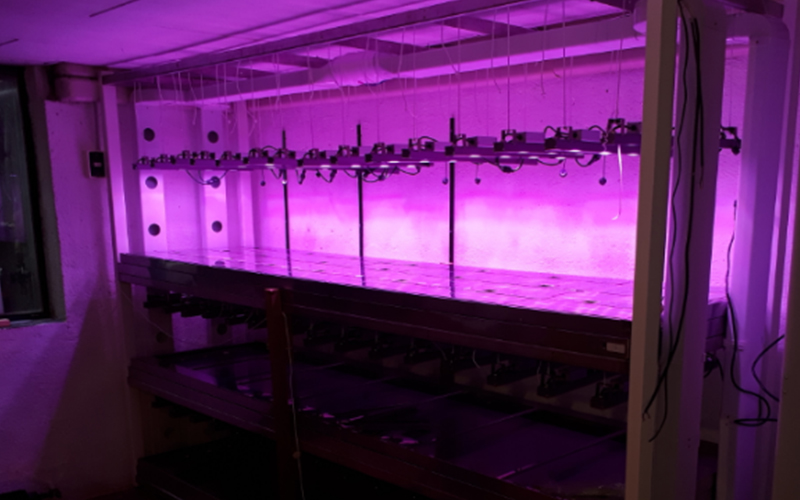
Hydroponics deals with "soilless farming" which means planting in growing media that support copious growth and enhanced yields throughout their planting cycle. The process of hydroponic planting needs little growing areas within the cities in congested places in the apartments, condominiums, and small urban houses in the basements, garages, and underground greenhouses. The overall process holds good for the sights that are deprived of sunlight in the cold winter climates. Hydroponic supports growing multiple ranges of vegetables, microgreens, herbs, and leafy greens along with growing flowering plants, root vegetables, and fruits of short production cycles such as strawberries and blueberries provided that the requirements are met fully for indoor hydroponic planting. Hydroponic planting is not as simple as it appears as it needs a lot of attention, dedication, and care and sometimes, a minor mistake results in the higher production losses. But, once you proceed with the suggested procedures and choose an advanced system for the purpose, even the beginners achieve marvelous results. Overall, the Hydroponic building stands on four pillars. i.e., Growing media, grow lights, temperature, and humidity. Let see how;
Growing Media:
Growing media is selected for its capacity to provide water, air, and nutrients to the plants. A growing media must hold the features to absorb nutrients-dissolved water and capability to allow free movement of oxygen particles within the system. It again depends on the types of systems what procedure suit to push oxygen into the system for plants absorption. Generally, the growing mediums comprise of rock wool, coconut coir, clay pebbles, and a pumice stone that hold good moisture absorption and aeration abilities and strengthen the roots of the plants. An overhead feeding system or a reservoir feeds plants for the required nutrients dissolved in water.

Feeding through a reservoir is more suitable than through an overhead system.
Grow Lights:
The plant needs light to assimilate food through the process of photosynthesis. Generally, a full spectrum light with a desirable wavelength makes things easy for growing indoor where the direct access of sunlight is not feasible. The grow lights are the crux of hydroponics since the practice of growing hydroponic food is entirely due to the limitations of sunlight indoors. Plants need plenty of light from the seedling, vegetative, and development stages to flower and fruit maturity. Usually, light supplementation is done with the light that contains a wavelength of 380 nm to 800 nm throughout the growth cycle of the crop planted indoor. Any full spectrum LED grow light or a COB light will suit your needs depending on the footprint of light and the types of your plants in any grow room.

Temperature:
Temperature is one of the four critical factors that determine the success of plant growth in any grow room. Hydroponic system manufacturers provide you an insight into this factor for growing several vegetables and fruits that you are willing to grow. To keep plants growing, the temperature of nutrients dissolved water is supposed to be kept between 65°F to 80°F. Hydroponics Researchers prove this range is an ideal situation for the best absorption of nutrients from the growing media for growing healthy plants. Moreover, when the plants are at their best to absorb nutrients, there are fewer chances of disease infestation in any hydroponic system. It needs to install 3 different temperature gauges in the center of a grow room at the variable heights to measure the temperature of the grow room and frequently checking the temperature of the liquid media using a hand-held temperature meter. Some advanced systems come with readily incorporated cooling systems that keep down the water temperature during summer. Others need attention to take control of things. The variations between the day and night temperatures are important too. The researchers suggest keeping a minimum difference between day and night temperature. The debate is still on whether the difference of 5 Degree Celsius is the best or 10. Anyhow, indoor hydroponic planting is performing great at both of the suggested variations.
Humidity:

The humidity also plays a decisive role in the success of growing plants indoor. It generally involves artificial arrangements for the cheap-built systems. But the advance system has built-in options to regulate the humidity during the process of growth. Growers need to concentrate during active crop growth indoor. The ideal relative humidity at the initial stages of seedling development and vegetative growth is kept between 60-70% and gradually reduced to 40% near the maturity of crops. During the vegetative stage, the temperature may go up due to continuous evaporation from the larger surface area of plants that need attention. It is advisable to keep humidity between 60-70% during 1st two weeks of vegetative growth, bringing it down between 55-65% during 1st two weeks of flowering, and further lowering it to 40% at the final stages of glowering.























